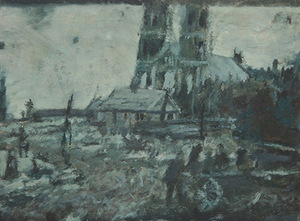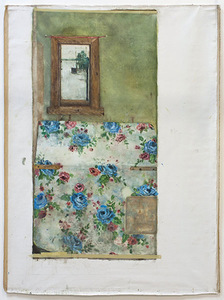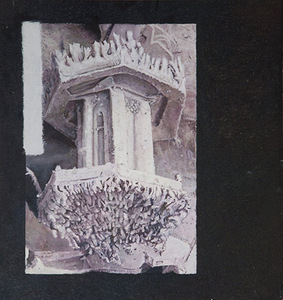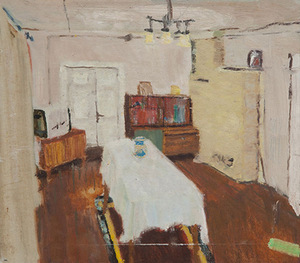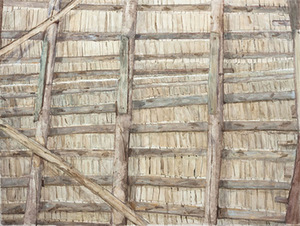When time takes longer 4
In brief: Young man Petras Lincevičius, who was nominated for the best young artist at the Art Fair "ArtVilnius'15", looks like, as if he has descended from another century. His thoughts are never in a hurry, words flow slowly and works make the past moments and events contemporary.
Artist is inspired by his immediate environment. Through his works he analyzes the topic of the past. I wanted to know why this subject is so important to him.
Petras Lincevičius says, "When finishing my master's at the Vilnius Academy of Arts I was writing a theoretical work on the ethno-cultural heritage of the Suvalkija region. Assigning myself to that region, I do not know who I am. This has raised questions, what is Suvalkija in today's society, does it influence it in any way? I started researching the inherited history that is connected to Suvalkija, in order to, at least partly, answer these questions. I paint history and what was left - the artifacts that speak of my great grandparents and previous generations. In this way, I learn more about myself."
Painter's works look like they are covered with a veil - there are no bright colors, emotional brush strokes, everything seems to be covered with nostalgia, even melancholy colors. Does the past really become faded in the memory?
According to Petras Lincevičius, he paints the present, "more specifically, what remains in the present, as I have mentioned earlier, artifacts. I do not remember neither my ancestors nor their things that I am painting; I do not remember their history, because I was never exposed to it. When painting, I do not fade the colors on purpose, I am not trying to create a faded image, but when you paint the artifacts whose owners no longer exist - an awareness of human transience emerges. Things last longer than their owners. This feeling that continuously accompanies the painting process covers the images with a time-affected veil.
I asked the painter, what he thinks a person needs, in order for art to become an integral part of his life.
"A Vilpišauskas has told me that every piece has its audience. That is probably true. It seems that I do not like the work I have just painted, but someone else sees it and it becomes his/her favorite. If we talk about the consumption of art then people just need to find a piece of work that they like personally, which is close to them; they need to find that language of art which is understandable, that speaks to a person. If there is a wish to bring art closer to our daily activities there has to be a desire to know ourselves. And art can be a very good tool for such knowledge," says Petras Lincevičius.
